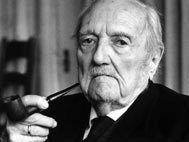 | ||
Form criticism is a method of biblical criticism that classifies units of scripture by literary pattern and then attempts to trace each type to its period of oral transmission. Form criticism seeks to determine a unit's original form and the historical context of the literary tradition.
Contents
Form criticism was originally developed for Old Testament studies by Hermann Gunkel, Martin Noth, Gerhard von Rad, and other scholars, who used it to supplement the documentary hypothesis with reference to its oral foundations. It later came to be applied to the Gospels by Karl Ludwig Schmidt, Martin Dibelius, Rudolf Bultmann, and Robert M. Price among others.
Over the past few decades, form criticism's emphasis on oral tradition has waned in Old Testament studies. This is largely because scholars are increasingly skeptical about our ability to distinguish the "original" oral traditions from the literary sources that preserve them. As a result, the method as applied to the Old Testament now focuses on the Bible's literary genres, becoming virtually synonymous with genre criticism.
Literary forms and sociological contexts
Form criticism begins by identifying a text's genre or conventional literary form, such as parables, proverbs, epistles, or love poems. It goes on to seek the sociological setting for each text's genre, its "situation in life" (German: Sitz im Leben). For example, the sociological setting of a law is a court, or the sociological setting of a psalm of praise (hymn) is a worship context, or that of a proverb might be a father-to-son admonition. Having identified and analyzed the text's genre-pericopes, form criticism goes on to ask how these smaller genre-pericopes contribute to the purpose of the text as a whole.
Demythologising
As developed by Rudolf Bultmann (1884-1976) and others, form criticism attempts to rediscover the original kernel of meaning of a text. This process has been described as "demythologising", although the word must be used with caution. "Myth" is not intended to convey a sense of "untrue", but the significance of an event in the narrator's agenda. What, ultimately, does the writer mean by it?
In the case of the Canonical gospels, this demythologising aims to reveal the underlying kerygma or "message" conveyed by a passage: what does a Gospel say about the nature and significance of Christ and about his teaching? Form criticism thus attempts to reconstruct the theological opinions of the primitive church and of pre-talmudic Judaism.
The Evangelists
Studies based on form criticism state that the Evangelists drew upon oral traditions when composing the canonical gospels. This oral tradition consisted of several distinct components. Parables and aphorisms are the "bedrock of the tradition." Pronouncement stories, scenes that culminate with a saying of Jesus, are more plausible historically than other kinds of stories about Jesus. Other sorts of stories include controversy stories, in which Jesus is in conflict with religious authorities; miracles stories, including healings, exorcisms, and nature wonders; call and commissioning stories; and legends. The oral model developed by the form critics drew heavily on contemporary theory of Jewish folkloric transmission of oral material, and as a result of this form criticism one can trace the development of the early gospel tradition. However, "Today it is no exaggeration to claim that a whole spectrum of main assumptions underlying Bultmann's Synoptic Tradition must be considered suspect."
